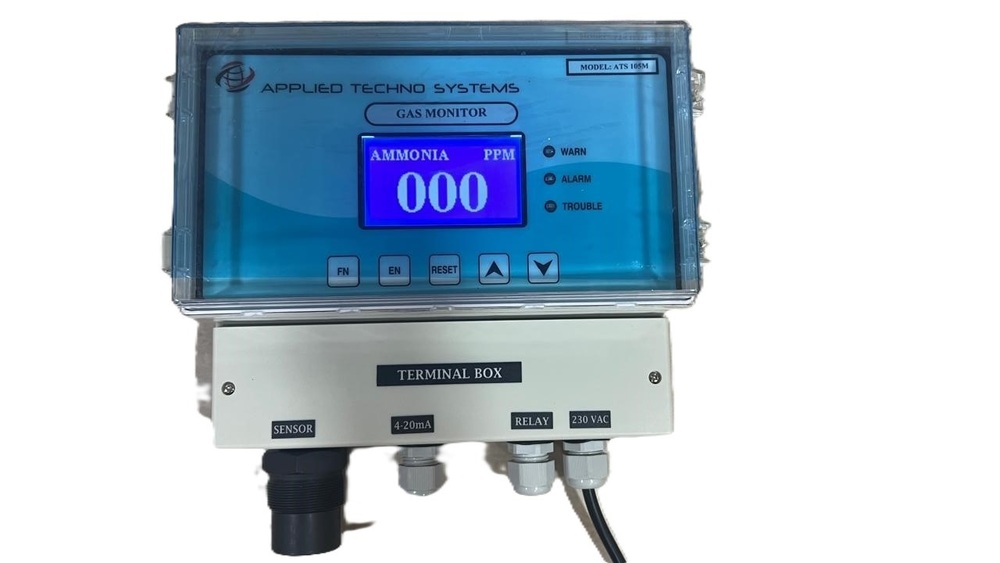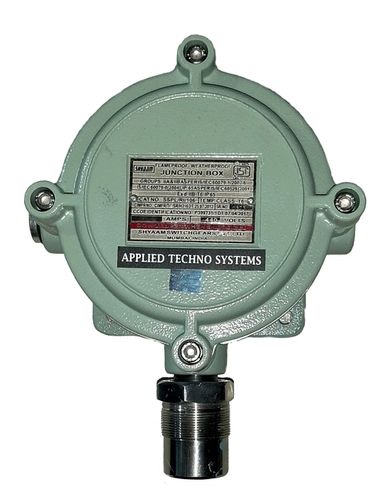- ओस बिंदु मीटर
- गैस विश्लेषक
- पोर्टेबल गैस डिटेक्टर
- नमी और ओस बिंदु विश्लेषक
- धूल मॉनिटर
- गैस निगरानी प्रणाली
- गैस रिसाव डिटेक्टर
- गैस ट्रांसमीटर
- वीओसी लीक डिटेक्टर
- वायु गुणवत्ता निगरानी प्रणाली
- ऑनलाइन सतत उत्सर्जन निगरानी प्रणाली-ओसीईएमएस
- ओस प्वाइंट मॉनिटर्स
- गैस डिटेक्टर
- अपारदर्शिता मॉनिटर
- पोर्टेबल फ़्लू गैस विश्लेषक
- ऑनलाइन एसओएक्स और एनओएक्स गैस विश्लेषक
- मीथेन गैस रिसाव डिटेक्टर
- हाइड्रोजन शुद्धता विश्लेषक
- गैस शुद्धता विश्लेषक
- प्रवाह निगरानी प्रणाली
- निर्माता गैस विश्लेषक
- गैस डिटेक्टर अंशांकन सेवा
- पोर्टेबल गैस मॉनिटर्स
- गैस सेंसर ट्रांसमीटर
Hydrogen Sulphide (H2S) Gas Detector
उत्पाद विवरण:
मूल्य और मात्रा
- 1
उत्पाद वर्णन
A Hydrogen Sulphide (H₂S) Gas Detector is a device designed to detect the presence and concentration of hydrogen sulfide (H₂S) gas in the environment. Hydrogen sulfide is a toxic and highly flammable gas with a characteristic rotten egg smell, commonly produced in industrial settings like petroleum refineries, natural gas processing plants, sewage treatment plants, and agricultural facilities.
Key Features of an Hâ‚‚S Gas Detector:-
Detection Range: Hâ‚‚S detectors typically have a range to measure low concentrations (e.g., 0-100 ppm or 0-1000 ppm) depending on the application.
-
Real-Time Monitoring: These detectors provide real-time measurements of hydrogen sulfide levels in the air to ensure safety in workplaces where Hâ‚‚S is a risk.
-
Alarms: Most detectors have both audible and visual alarms that trigger when the concentration of Hâ‚‚S exceeds preset thresholds. This is critical for worker safety.
- Low-Level Alarm: Alerts when the gas concentration approaches a safe limit.
- High-Level Alarm: Alerts when the gas concentration exceeds a dangerous threshold.
-
Sensor Types:
- Electrochemical Sensors: Commonly used in Hâ‚‚S detectors due to their sensitivity and ability to detect low levels of gas.
- Infrared Sensors: Can also be used for detection, especially in more complex or industrial systems.
-
Calibration: Hâ‚‚S detectors need to be periodically calibrated to ensure accurate readings. Calibration is usually done with certified calibration gases.
-
Portability: Many Hâ‚‚S gas detectors are portable, allowing workers to carry them in hazardous environments. These detectors are compact and often equipped with straps or clips for easy attachment to clothing.
-
Data Logging and Connectivity: Advanced models may include features like data logging to store gas concentration history, or wireless connectivity to integrate with monitoring systems.
-
Battery-Powered: Many portable Hâ‚‚S detectors run on rechargeable or replaceable batteries for convenience.

Price: Â
- 50
- 100
- 200
- 250
- 500
- 1000+








 English
English Spanish
Spanish French
French German
German Italian
Italian Chinese (Simplified)
Chinese (Simplified) Japanese
Japanese Korean
Korean Arabic
Arabic Portuguese
Portuguese